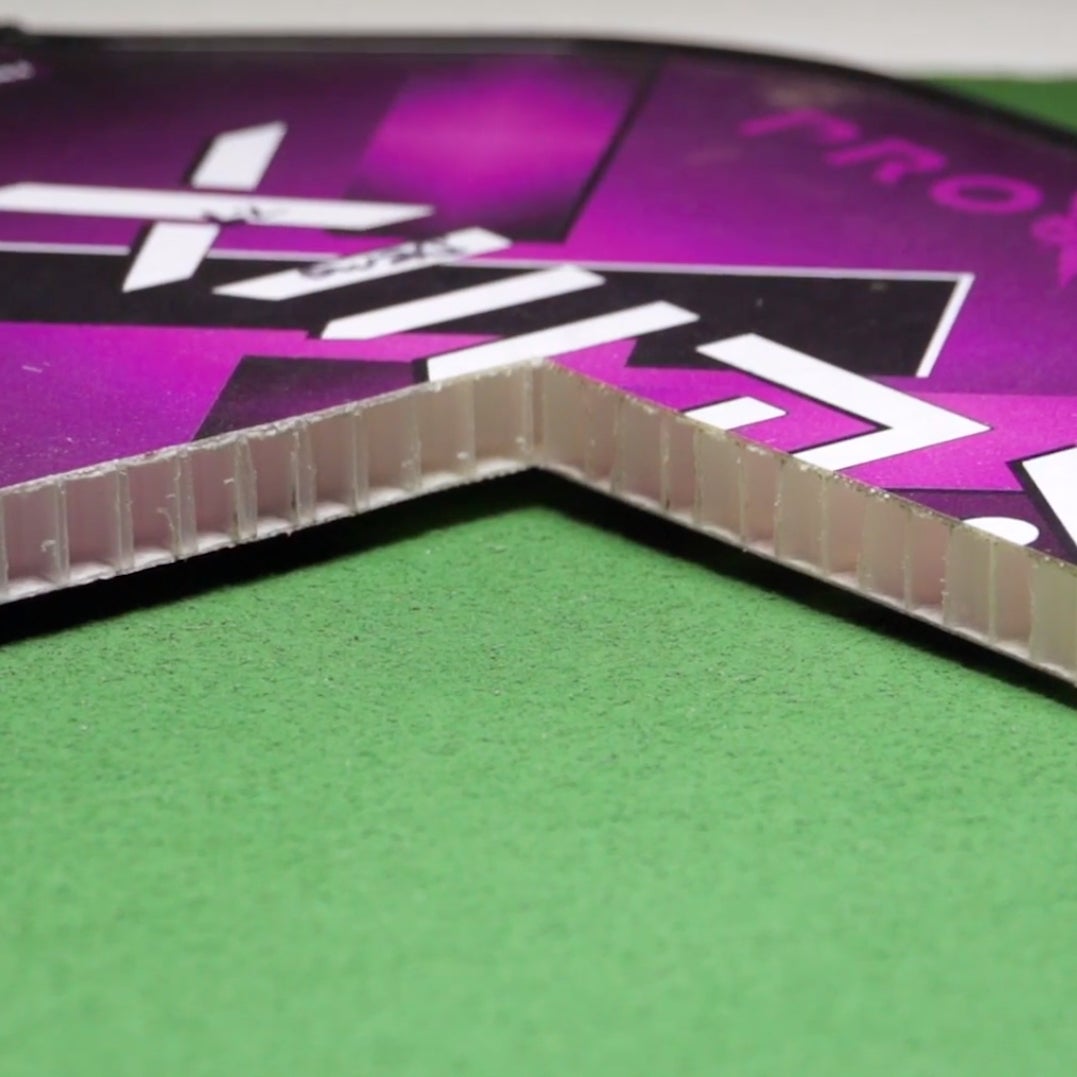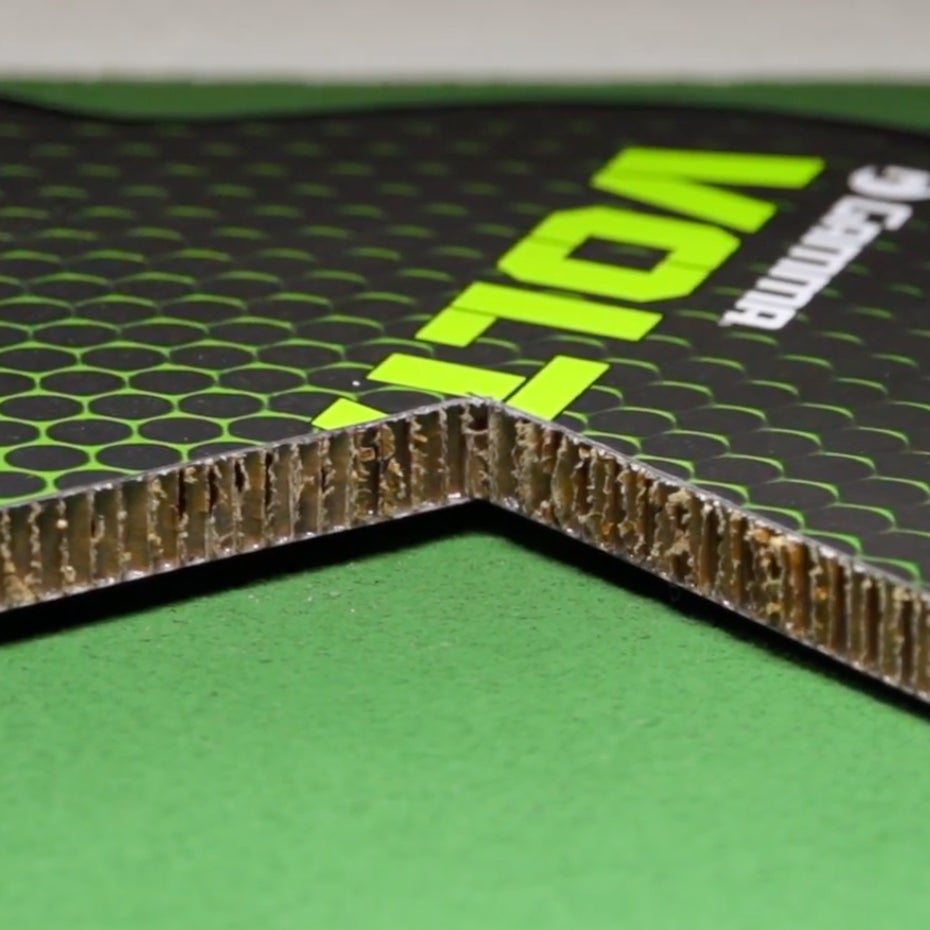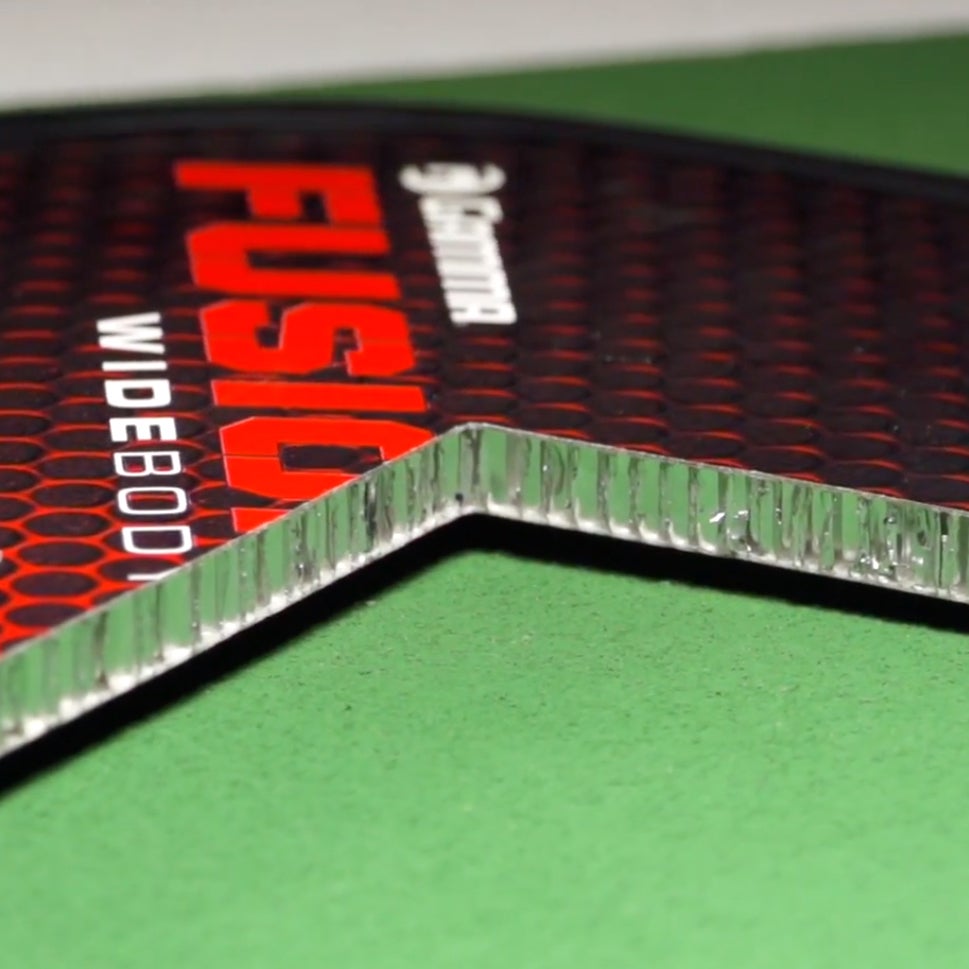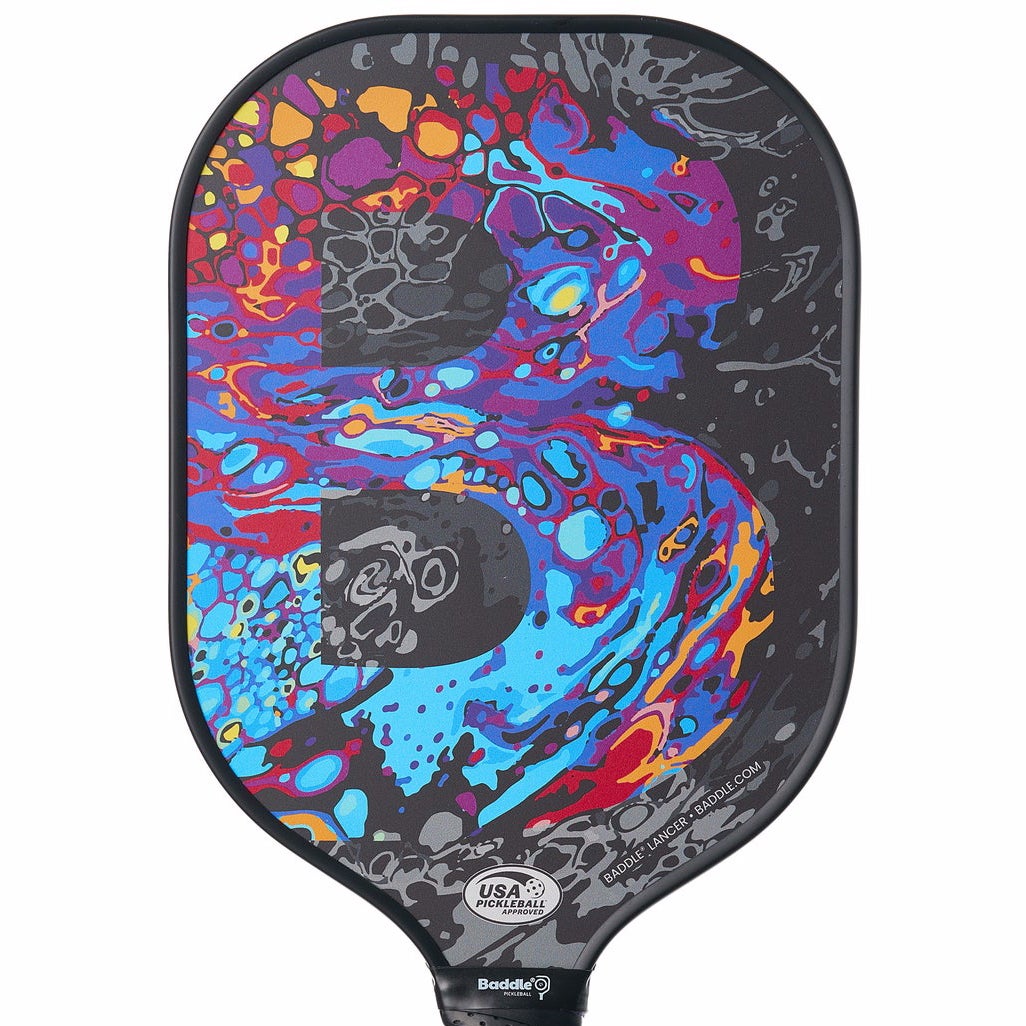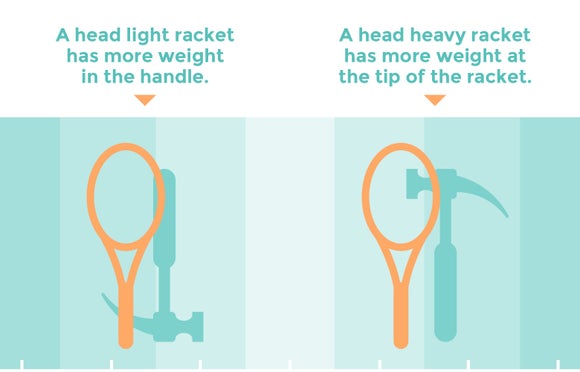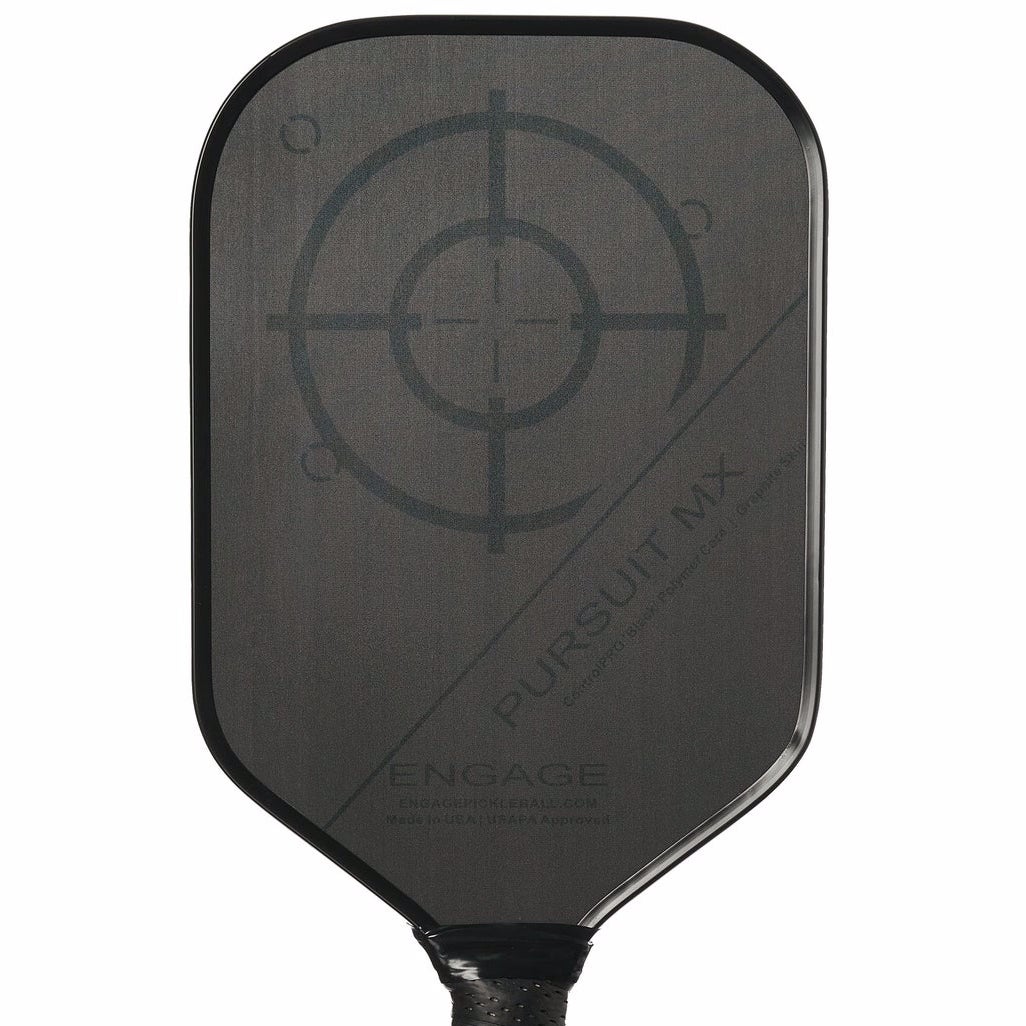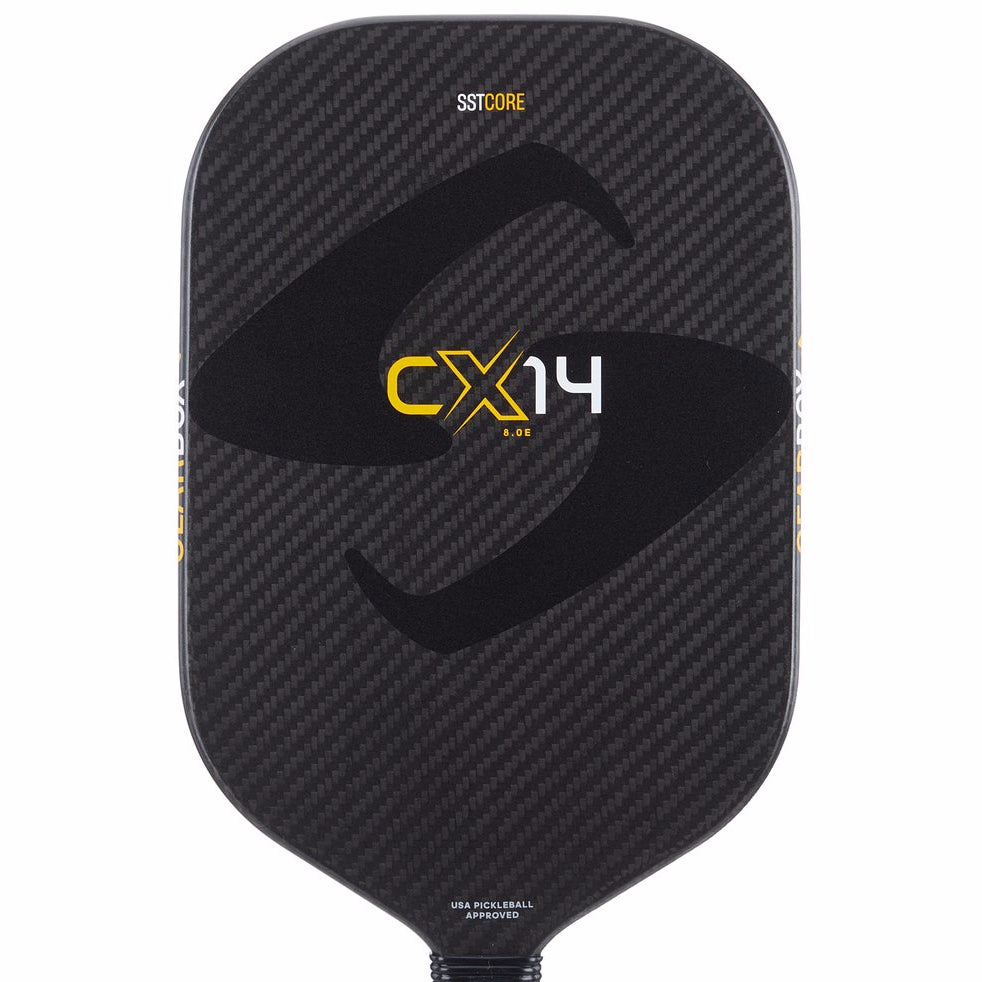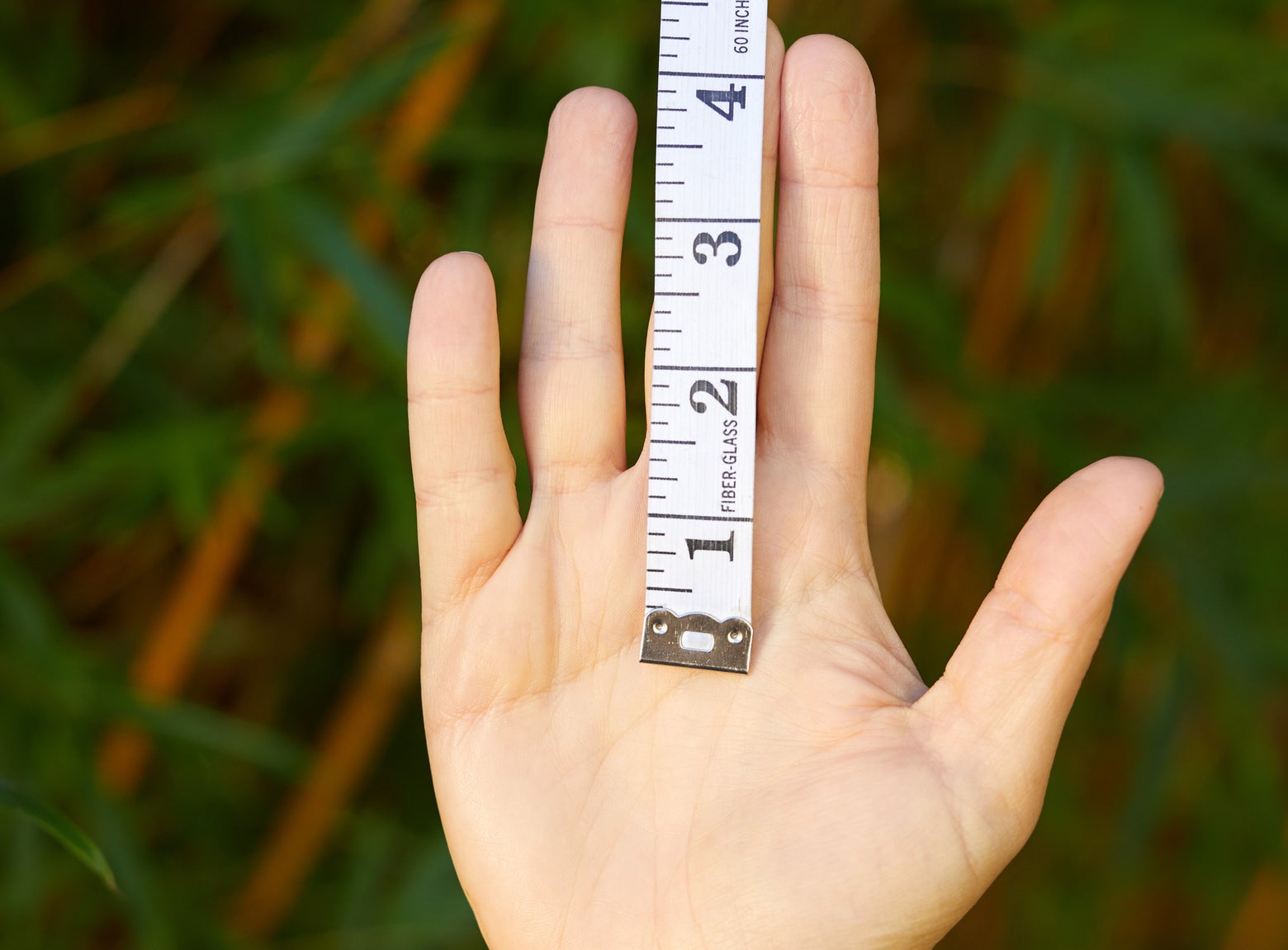How to Pick the Right Pickleball Paddle
Whether you're buying your first paddle or upgrading from your current paddle, choosing the right paddle can seem daunting. To make this process easier, here’s information on paddle characteristics and how they affect performance.
Getting started
To begin breaking down the vast selection of pickleball paddles on the market, we'll discuss how various characteristics affect a paddle's performance, and what paddle type works best for different playstyles. The main differences that affect playability in pickleball paddles are weight, paddle core, paddle surface, paddle thickness, grip size and handle length.
See Our Favorite Pickleball Paddles: Best Pickleball Paddles
| Paddle Term | Details |
| Weight | Overall weight of the paddle |
| Paddle Core | The inner composition of the paddle |
| Paddle Surface | The hitting surface of the paddle |
| Paddle Thickness | The thickness of the paddle's core & surface |
| Grip Size | The circumference of the grip |
| Handle Length | The length of the handle |
Paddle Weight
The weight of a pickleball paddle will affect its generation of power and swing speed. Paddles are typically categorized into one of three weight categories: Lightweight, Midweight, or Heavyweight.
Lightweight Paddles - 7.4 ounces and under
These paddles offer the least power and most control. Additionally, they are super fast and allow for quick reactions. These are generally used by experienced players with very fast arm speeds that need precision and have no issues generating power.
Midweight Paddles – 7.5 - 8.4 ounces
This is the most common paddle weight range as it offers a nice blend of power and control. This weight category covers a large area of playability, and we recommend starting around 7.8 ounces if you’re unsure which weight to pick.
Heavyweight Paddles – 8.4 ounces and over
Paddles in this category offer the most power and depth, but sacrifice control and can be difficult to use for dinks and touch shots. Because of this, heavy paddles are useful in singles when it may be necessary to keep the ball moving quickly side to side, or past the opponent at net. We recommend heavy paddles for players with slower arm speeds that need extra pop.
Basic Composition
Paddle composition highlights the materials used to create the paddle's core and surface. While the core and surface materials both affect power, feel and durability, the paddle's surface can also contribute to the paddle's spin potential.
Paddle Core
The paddle core affects the feel and energy transfer into the pickleball. Generally in a honeycomb shape, the most common core type is polymer while other cores we will cover consist of nomex and aluminum.
Polymer Core
This is the most common core. It provides a plusher feel than nomex cores, and is very versatile for driving power and touch shots. Polymer cores offer all-around playability and are quieter than aluminum and nomex cores. If you aren’t sure which to choose, we recommend picking a paddle with a polymer core for its versaility.
Nomex Core
This is a firmer core that provides the most power and ball speed. While great for power, nomex cores sacrifice control and lack a plush feel. They are audibly louder than polymer cores for players that are in a noise ordinance area. These cores are effective for skilled singles players, or beginners looking for massive, effortless power
Aluminum Core
Aluminum cores are lightweight and easy to swing, but have very low levels of power. These cores are not as loud as nomex, but still much louder than polymer. The lightweight characteristics make this paddle easy to use for juniors, or players that have difficulty swinging a standard paddle; however, with the amount of lightweight paddles with polymer cores now on the market, aluminum cores are becoming less common and are mostly geared towards the specialized player wanting the absolute highest maneuverability, touch and control.
Paddle Surface
The pickleball paddle surface (aka paddle face or hitting surface) is the visible paddle area that makes contact with the ball. The paddle surface affects feel, power, touch, and spin. Common paddle surfaces we will cover include fibreglass (composite), graphite and carbon fibre.
Fibreglass Surface (Composite)
Fibreglass — or composite — surfaces are the most common surfaces. They are precise and well-regarded as they tend to offer the highest texture for spin production. While they offer a great mix of power and control, they are typically less durable than carbon fibre and graphite surfaces. They appeal to new players and veterans alike. If you aren’t sure, we recommend starting with a fibreglass surface.
Graphite Surface
This surface is also popular as it is light, durable and powerful. With a firm feel, the ball quickly rips off the paddle face. Graphite surfaces can also be textured to add spin, but we found fiberglass is more spin friendly since it allows the ball to dig more into the surface. Overall, this is a choice we recommend for players with developed precision and spin that want additional power.
Carbon Fiber Surface
Carbon Fiber surfaces are the strongest, most durable surfaces available and provide a softer feel. It is distinctive with its weave appearance and offers the least amount of power. We found these paddles typically have the least amount of texture, but can still generate spin if the player has already developed slice and topspin. Overall, the low power and superb durability make this a great surface for maximum touch and control.
Paddle Thickness
Often overlooked when choosing a paddle, paddle thicknesses affect feel and power, and typically range from 11 to 19 millimeters (mm). Knowing the impact of paddle thickness is important when choosing paddles, as some paddles are offered in multiple thickness options.
Thicker Paddles
Contrary to popular opinion, thicker paddles (14 mm or thicker) offer a softer feel and more control while still providing sufficient power. Thicker cores absorb more energy, which in turn provides vibration dampening, touch and stability (bigger sweet spot) on all areas of the paddle – even pesky mis-hits. If unsure, we recommend going with a thicker core around 14-16 millimeters.
Thinner Paddles
Thinner paddles (less than 14 millimeters) offer more power and response as the energy is not as dissipated throughout the paddle as with a thicker core. This equates to more energy being transferred into the ball for better power. These paddles typically have a smaller sweet spot, firmer feel and are more common among experienced players wanting extra pop.
Grip Size
Grip size is the circumference of the grip. Picking the right size is important for securing the paddle comfortably in your hands. While choosing a grip size is based on personal preference, a grip that is too large may cause discomfort and a "weak" feel at contact due to an unsecured grip. Overall, if unsure, a safe choice is a grip size ranging from 4 inches to 4 1/4 inches. Below is a guideline for choosing the right grip size:
How to measure your grip size
1. Holding an eastern forehand grip (as if you're dribbling a ball on the paddle's edge), you should be able to fit the index finger of your non-hitting hand in the space between your ring finger and palm. If there isn't enough room for your index finger, the grip is too small. If there is space between your finger and palm, the grip is too big.
2. You can also measure your grip size using a ruler. With your hand open and fingers extended close together, align the ruler with the bottom lateral crease of your palm and measure to the tip of your ring finger.
No way to measure? Here are our recommendations:
1. Smaller hands - Grip size 4 1/8 inches or smaller
2. Average hands - Grip size 4 1/8 - 4 3/8 inches.
3. Large hands - Grip size 4 3/8 or larger
What if I'm in between sizes?
It's easier to increase handle size on most paddles. If you're between grip sizes, go with the smaller size and add an overgrip to arrive at the ideal fit. A typical overgrip will increase a grip by 1/16 inch.
We also recommend you replace your grip regularly. A fresh, properly wrapped grip provides you with better paddle control and increased confidence.

